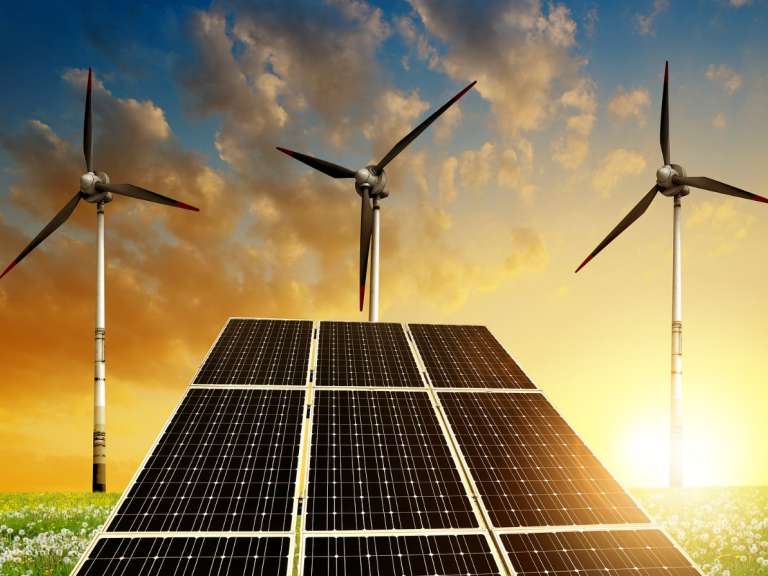As power grids become increasingly saturated with renewables, intermittent energy source balancing becomes critical. As costs continue to fall, batteries (typically lithium ion) will clearly have a role to play in integrating renewables and stabilizing future power grids. However, batteries are not the only answer. Grids have an existing resource—conventional thermal generation—that has great potential to help if properly upgraded, instrumented, and compensated.
Beyond Batteries
A study for PJM, a regional transmission organization that coordinates the movement of wholesale electricity in all or parts of 13 states and the District of Columbia, concluded that, with sufficient transmission and 1,500 MW of regulation reserves, up to 100,000 MW of renewables (30 percent of PJM's energy) could be introduced into the grid. This would increase the cycling required of conventional generation, leading to higher operating and maintenance costs, but the resulting savings would far outweigh the costs.
If properly upgraded and digitized, existing thermal generation could perform many of the same tasks as batteries without the significant capital investment required for new storage installations.
Initial experience shows that—with sensors installed in the right locations and the adoption of decision-making algorithms—power plants can evolve from traditional missions of providing energy and capacity into more flexible roles. They may be able to support any intermittent energy source and provide valuable services such as frequency regulation and ancillary services.
Economic Variance
The question is: How much renewable balancing can be accomplished simply by upgrading and digitizing existing thermal plants, rather than investing in new storage facilities? Answers to this question vary greatly, depending on numerous, constantly evolving inputs, including:
1. Capital and operating costs of implementing generation or storage solutions. Plant managers must weigh the cost of digitally retrofitting existing plants against the cost of investing in new storage facilities. They must also consider ongoing operating and fuel costs, including wear and tear, fossil fuel for thermal generation, and electricity to recharge batteries.
2. Specific tasks required, such as lead times for ramping and the expected frequency and duration of events. Here, batteries may have an edge. Even if thermal plants can achieve a three-minute start, batteries would still be needed for the fast response required to complement short-term intermittent energy sources. Infrequent usage may give an edge to batteries with limited-cycle lives (some lithium chemistries only offer 1,000–2,000 cycles), but frequent and heavy cycling can limit some battery lifetimes. However, lifespans of conventional generation can also be shortened if subjected to more punishing operating regimes. In addition, most battery storage solutions cannot last more than a few hours, while generation is not limited in this regard. Thus, the task performed is critical in determining which resource to apply. In the long run, batteries may excel in providing instantaneous services, while longer-term balancing may belong to thermal generation.
3. Specific market rules and value for services. This is currently an issue at PJM, where battery operators have complained to the Federal Energy Regulatory Commission (FERC) that rule changes have rendered battery-based energy storage uneconomical. System capacity, ancillary services, and frequency regulation prices can all vary considerably by year, affecting financial outcomes. It will be important to achieve clarity around performance requirements and sufficient compensation. For example, the amount that grid operators will pay for specific levels of performance in terms of lead times, frequency of events, and duration must be worked out for both batteries and conventional generation.
Combining Conventional Generation and Energy Storage
In some instances, combining thermal plants with batteries may yield favorable results. For example, gas-fired turbines are most efficient when run at a consistent output. Some companies are running batteries in tandem with generators, allowing the generator to run at consistent levels, while the accompanying batteries absorb fluctuations required to follow load or provide grid services. Forbes recently reported that Alevo, a large battery company, is evaluating this approach. Southern California Edison just unveiled the first battery–gas turbine hybrid, featuring a 50 MW aeroderivative gas turbine with a 10 MW battery, according to Power Engineering.
Moving Targets Make the Winner Unclear
The answers to the question of balancing renewables are still not clear, as there are still too many elements in flux. The industry is rapidly evolving, and rules are not yet finalized. The digitization of power plants is still a relatively new process. The energy storage industry is still immature, and battery prices are plummeting. For example, GM recently indicated it is well below its $145/kWh benchmark and ahead of the curve toward the $100/kWh goal, according to its most recent quarterly earnings call transcript, published on Seeking Alpha. Just a few years ago, that price point would have been unthinkable. China's entry into the global battery market accelerates that cost dynamic. Today, it's unclear whether there will be a winner between batteries and generators or whether there may be an all-of-the-above solution. However, that is not a justification for inaction.
Even in the absence of a clear winner between upgraded thermal plants and energy storage, the digitization of power plants is a no-regrets option. Digitization enables improved insight into power plant operations, which facilitates other economic benefits. These include predictive maintenance that lowers costs and increases safety, as well as the ability to run the plant more efficiently under various conditions. Fuel and operating costs can be reduced, even as revenues increase. The process of digitization—adding sensors and software and completing the necessary training—can be completed within weeks or months. In addition to increasing operational efficiency and visibility, digitization may also allow conventional generation to play a critical role in integrating renewable energy into the grid. That simply adds one more potential justification to a strategy that stands on its own.
